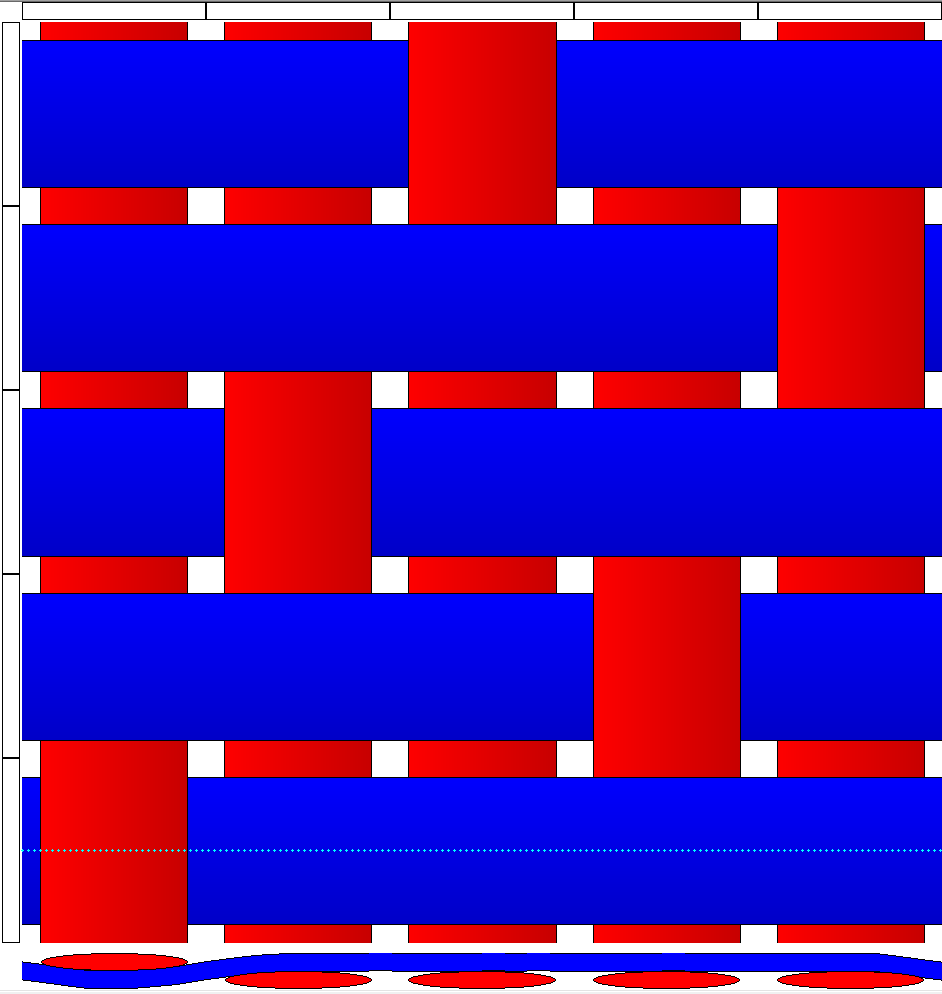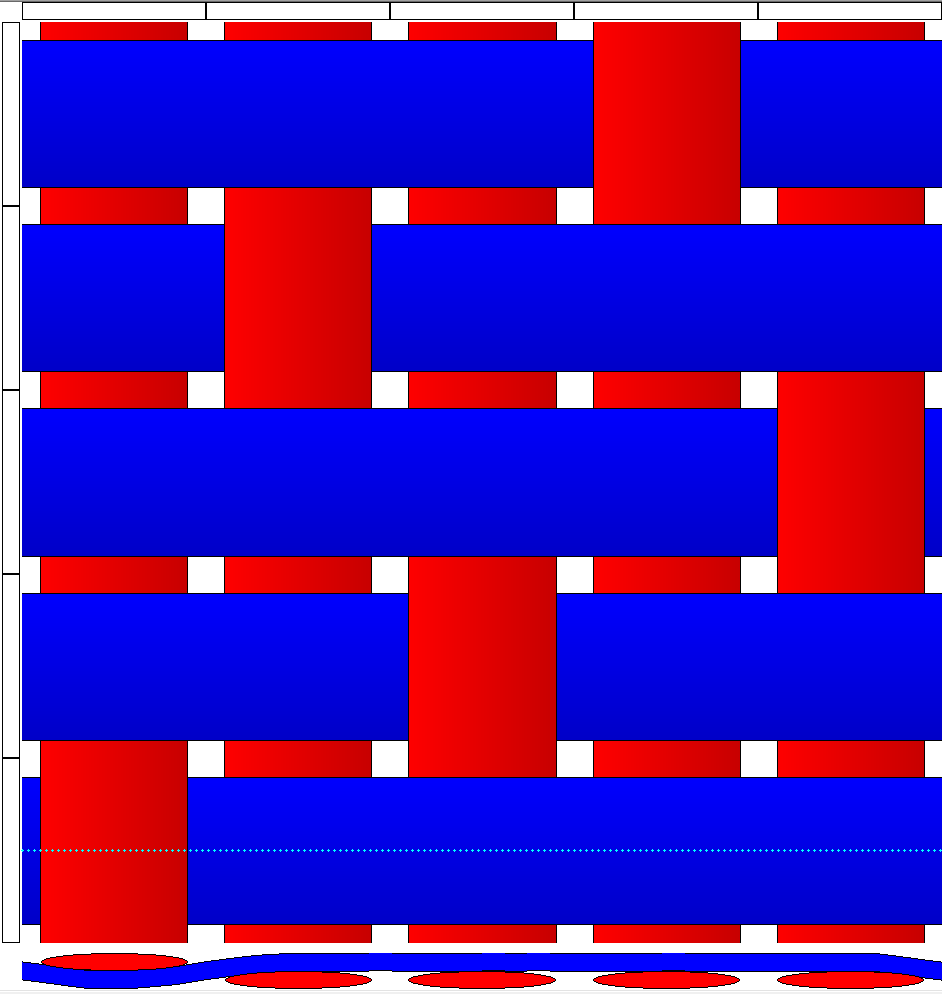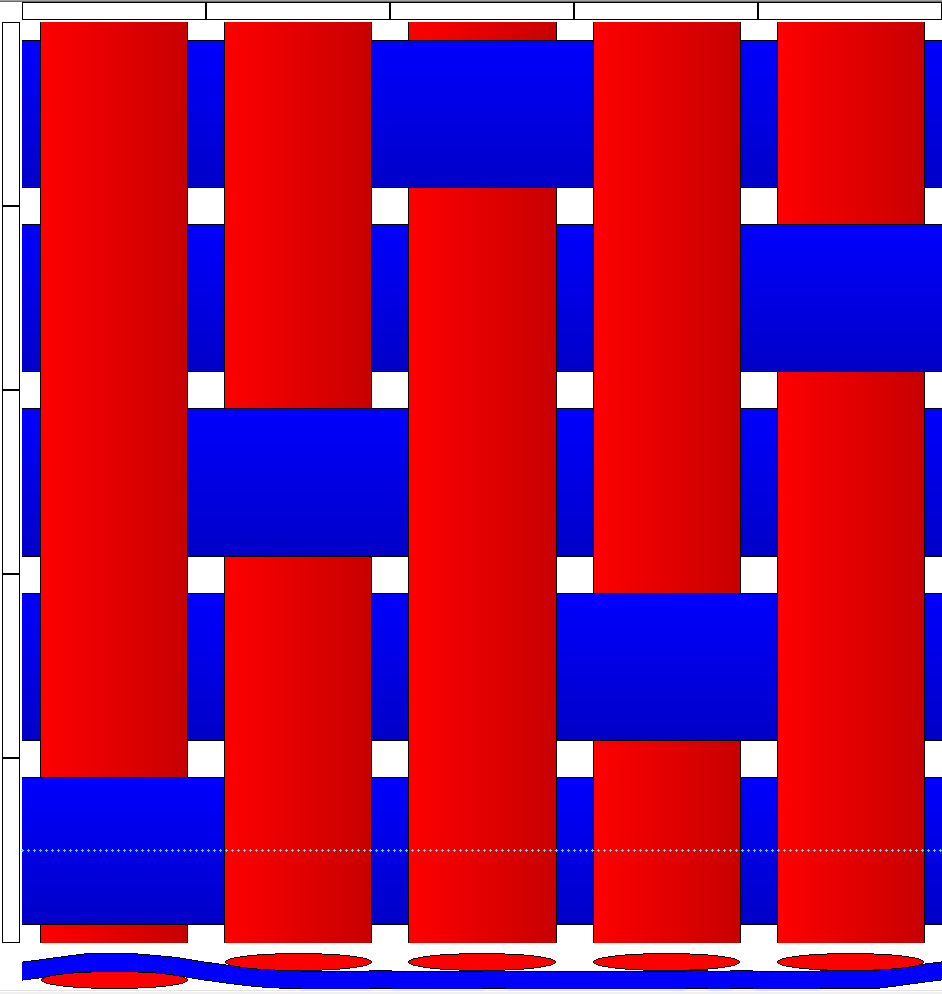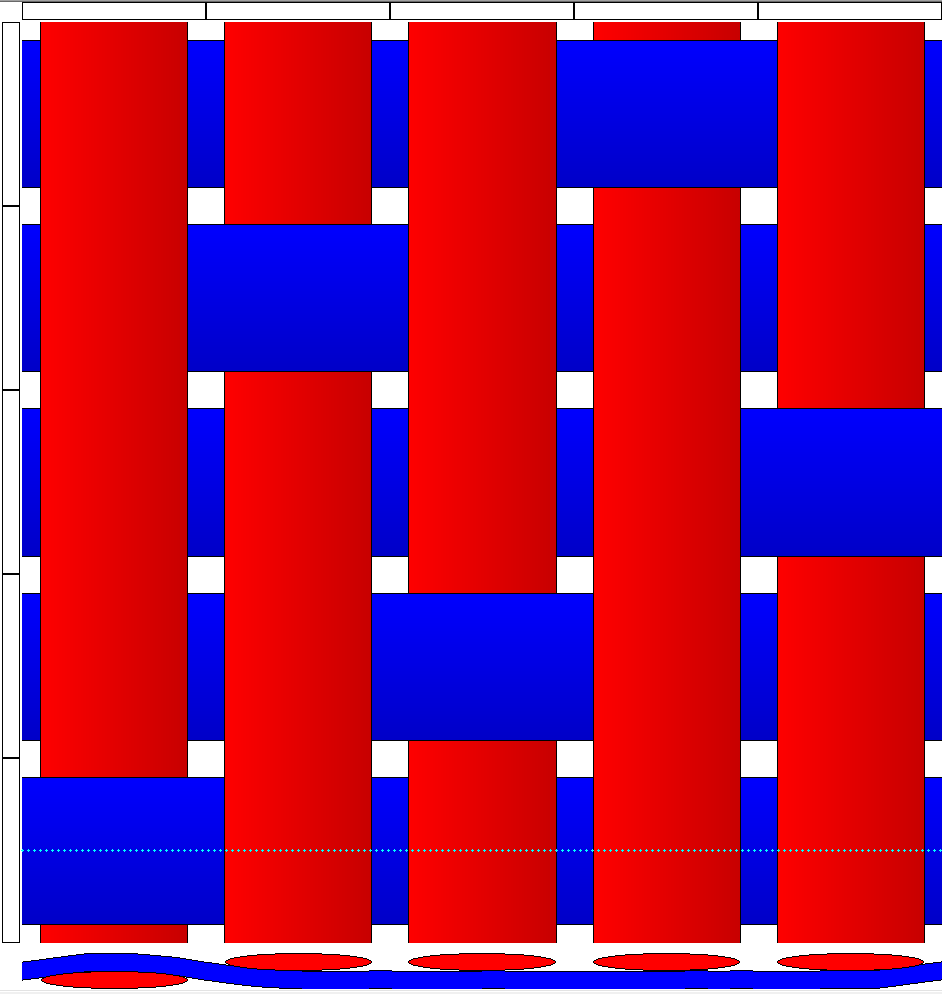Basic weaves
There is basically an unlimited number of weaves that can be developed, but weave patterns have three basic designs:
- Plain weave
- Twill weave
- Satin weave
- Examples
- Exercise
Plain weave
Plain weave report
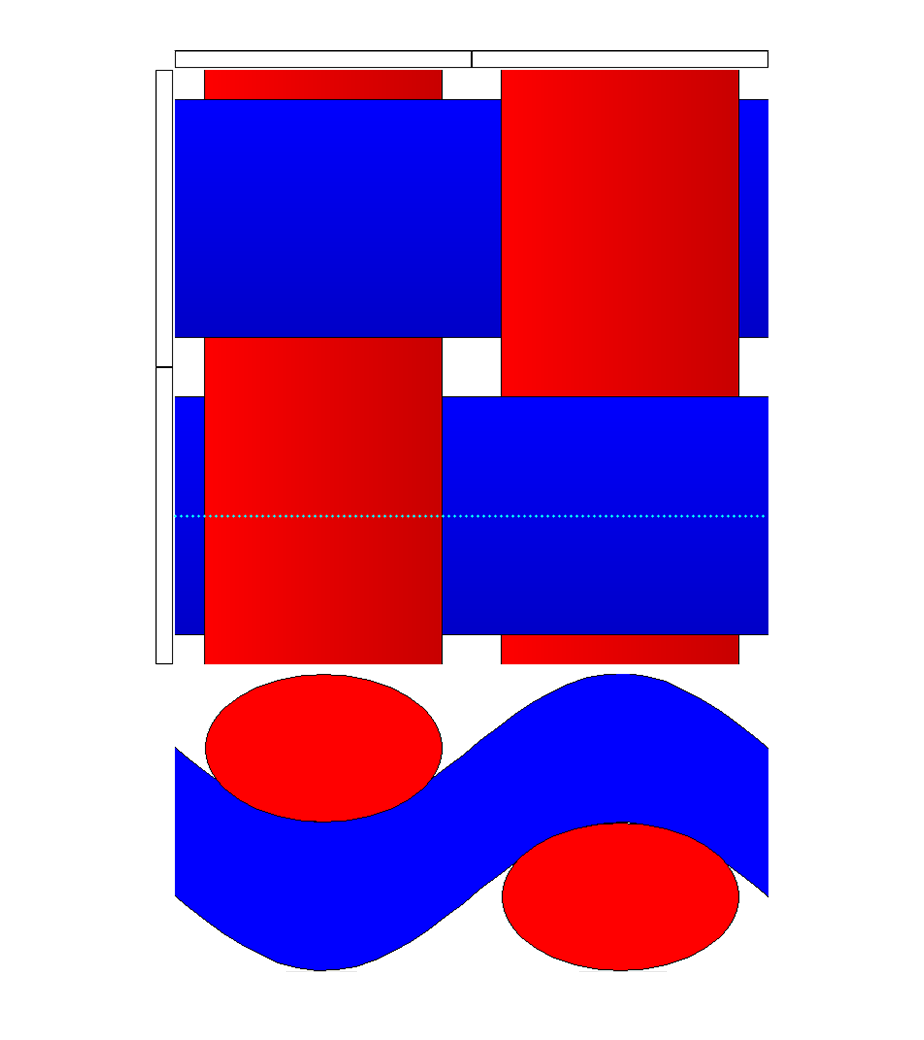

© University of Borås
Plain weave pattern


© University of Borås
Twill weave
Twill weave report
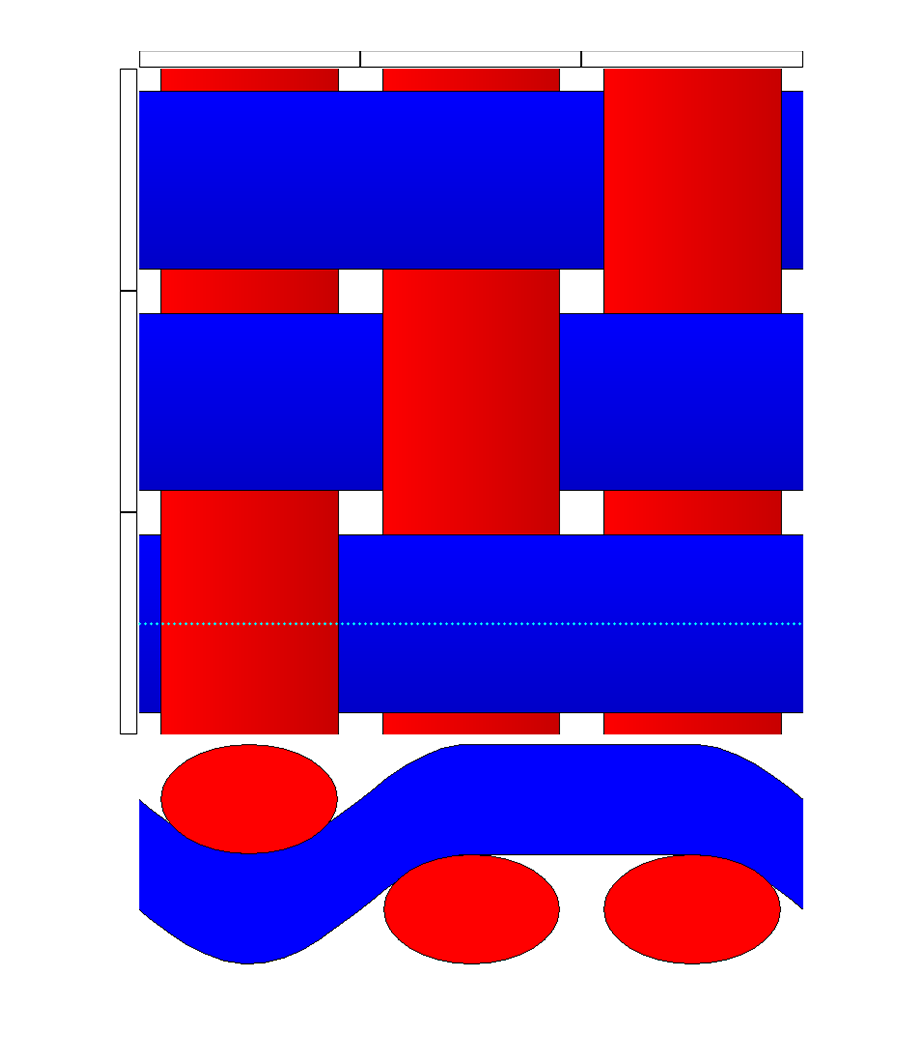

© University of Borås
Twill weave pattern
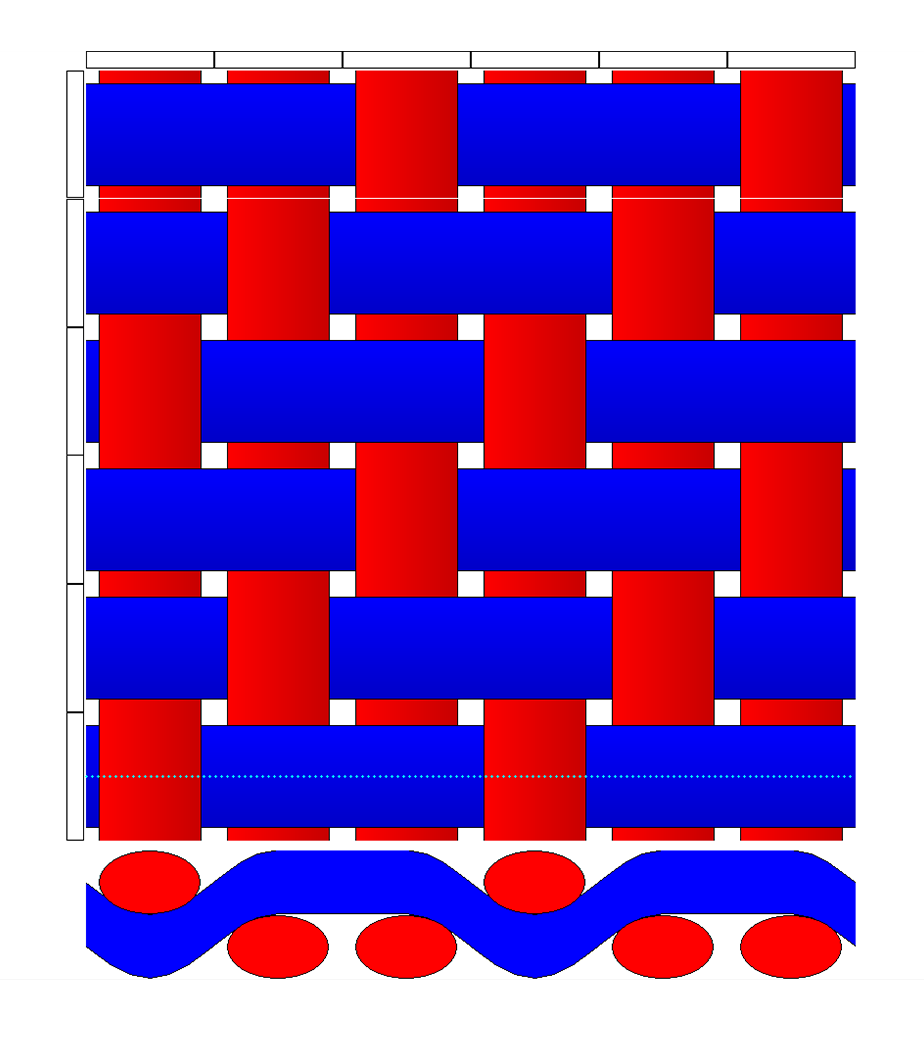

© University of Borås
This pattern can be described in the formula:
Where:
- T = Twill
- Fractional line = warp rise above and weft rise below
- Z = twill direction
Satin weave
Satin weave has just one weave point for each warp in the weave report. The points of interlacing should be scattered over the weave and cannot be placed side by side.
Satin weave report


© University of Borås
Satin weave pattern


© University of Borås
This pattern can be described in the formula:
Where:
- S = satin
- Fractional line = warp rise above and weft rise below
- (x) = step number
The step number cannot be 1 or a number equally divisible by the report number.
Examples
- The possible step numbers for a report 5*5: 2 and 3
- The possible step numbers for a report 7*7: 2, 3, 4 and 5
- The possible step numbers for a report 8*8: 3 and 5
Three steps are required to draw a satin pattern:
- Adding the numbers in the formula to get the report. In the figure: 1 + 4 = 5 which means the report is 5 * 5 squares or threads.
- Beginning from the left corner with a filled square for a weft-faced satin or an empty square for a warp-faced satin. In this figure it is a weft-faced satin.
- Count the number of squares equaling the step number and step to the right. Fill it for a weft-faced satin or keep it empty for a warp-faced satin.
Exercise
Match the formula for each weave pattern below. Drag the formula above the corresponding image.
-
Project
This resource was developed as part of an Erasmus+ project, funded with support from the European Commission under grant agreement 2016-1-SE01-KA203-22064.
The project was a collaboration between:
This resource has been released under Creative Commons license CC-BY-SA 4.0.
Contact
If you would like more information on this resource please contact:
- Academic content – The University of Boras (www.hb.se)
- Technical resource development – The University of the Highlands and Islands Educational Development Unit - EDU (edu@uhi.ac.uk)
Disclaimer
Except where otherwise noted, this website is licensed under Creative Commons license CC-BY-SA 4.0. All images used under permission remain the copyright of the license holder.
PDF
Download a copy of this resource in PDF format.
You can also print individual pages by printing directly from the browser.
×






